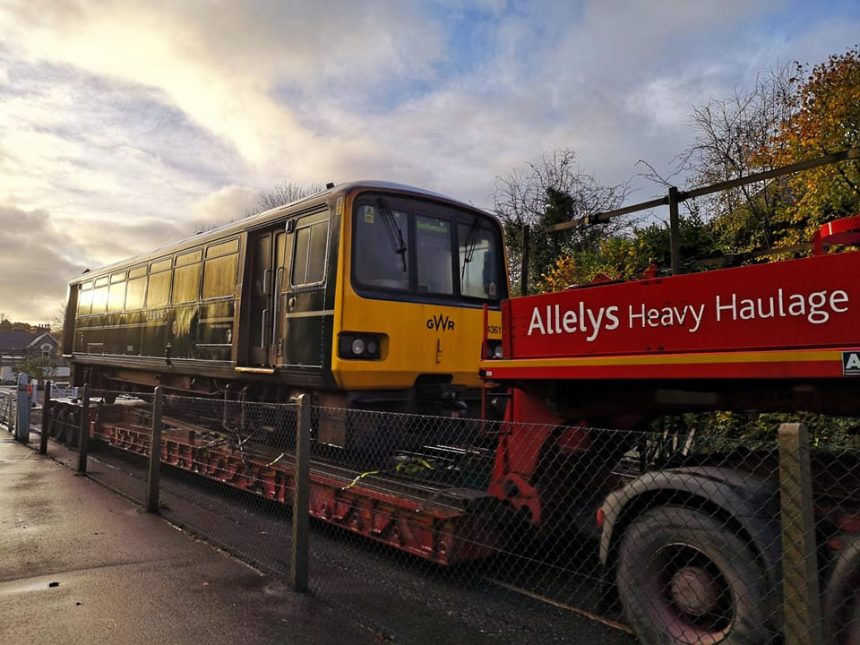The Tarka Valley Railway at Torrington in North Devon has taken delivery of a British Rail class 143 “Pacer” DMU No. 143617.
The Pacer was donated by Great Western Railway and was transported from St Philip's Marsh T&RSMD in Bristol to Great Torrington by Allelys Heavy Haulage. At one time, the unit was based at Great Western Railway's Exeter TMD and regularly used to work locally to Barnstaple.
Many hours of work by Tarka Valley Railway volunteers went into preparing the site for the arrival of the unit. Many months of behind-the-scenes planning also went into preparations to enable the railway to take delivery of the unit.
Torrington station is on the former Barnstaple to Halwill Junction railway line, but passenger services to Torrington ended in 1965 and the line closed completely in 1982. Since then the trackbed has been converted into The Tarka Trail walking and cycling route. The railway is located on part of the Tarka Trail, but has been fenced off from it to ensure the safety of all involved.
As well as 143617, the railway has an 0-6-0 diesel shunter that is used for construction work along the line. It was built in 1945 by John Fowler and is fitted with a 60 h.p. 6-cylinder Leyland diesel engine that was installed in 1977. At one time, it performed shunting duties at Cheltenham gas works.
Other rolling stock includes a BR Mk.1 TSO carriage painted in BR green which is used as a static buffet car, a 4-wheel oil tanker that has been restored in Bideford Gas and Coke Co. livery, a china clay wagon, a BR Toadfit brake van which is being restored and will be used for brake van rides, a former London Transport 402 Steel Hoppper which came from the Swanage Railway, and the body from a BR 4 wheel ventilated goods van that is being used as a workshop.

They were not universally disliked, they were disliked when they outstayed their welcome and were deployed on services for which they were not designed. After some teething problems they settled down and became pretty reliable and economical units. They’re ideal for heritage lines and being 35 years old they’re already way beyond the age of most younger visitors to heritage lines and therefore a novelty in their own right. There’s nothing to stop the new owners from repainting them in different liveries or adding some internal bling if that’s what customers want.
Unless they have recently laid some running line calling it a railway is not correct
GOOD I am glad these are now being preserved.
Oh dear – another preserved railway getting a retired Pacer train! these 4-wheel non-bogie units ride horribly and are draughtly and uncomfortable. They were universally disliked when in main railway network service and I can’t see them being any better liked on preserved railways – so they might actually put prospective passengers taking a trip. The first generation BR multiple units were actually superior to the Pacers
You clearly have a rather negative opinion of the 14x series, but it is only an opinion. They also have their followers. On the East Kent Railway the railbuses seems to have been well enough received. On the trips I’ve taken I haven’t noticed any passengers complaining or turning away from the ticket office when they see what’s in the platform. On the contrary, the passengers on board seem to have enjoyed themselves. The 14x units are perfectly capable machines in the right environment, although admittedly rather lively over rail joints. They were never meant for long journeys over the main line, a feature of the ‘squeeze the assets’ privatisation period that has led to their poor reputation. I suspect we may see a thinning of the herd when the Sprinters become available for preservation, but the railbuses still deserve a place in preservation. If only some of the EMU classes that are now being slaughtered could also find a home.